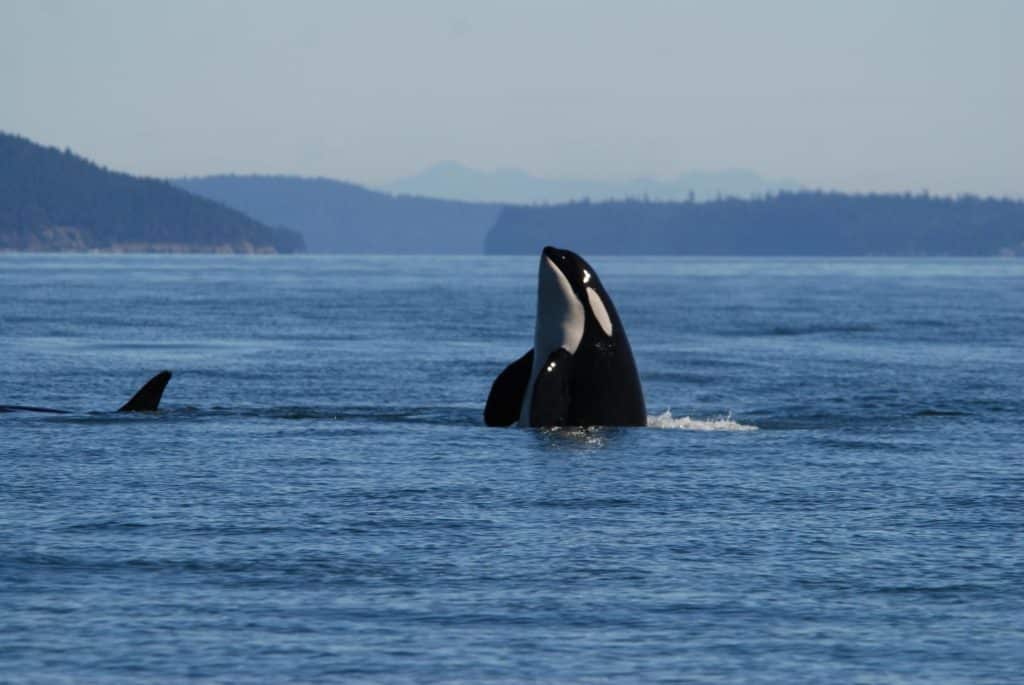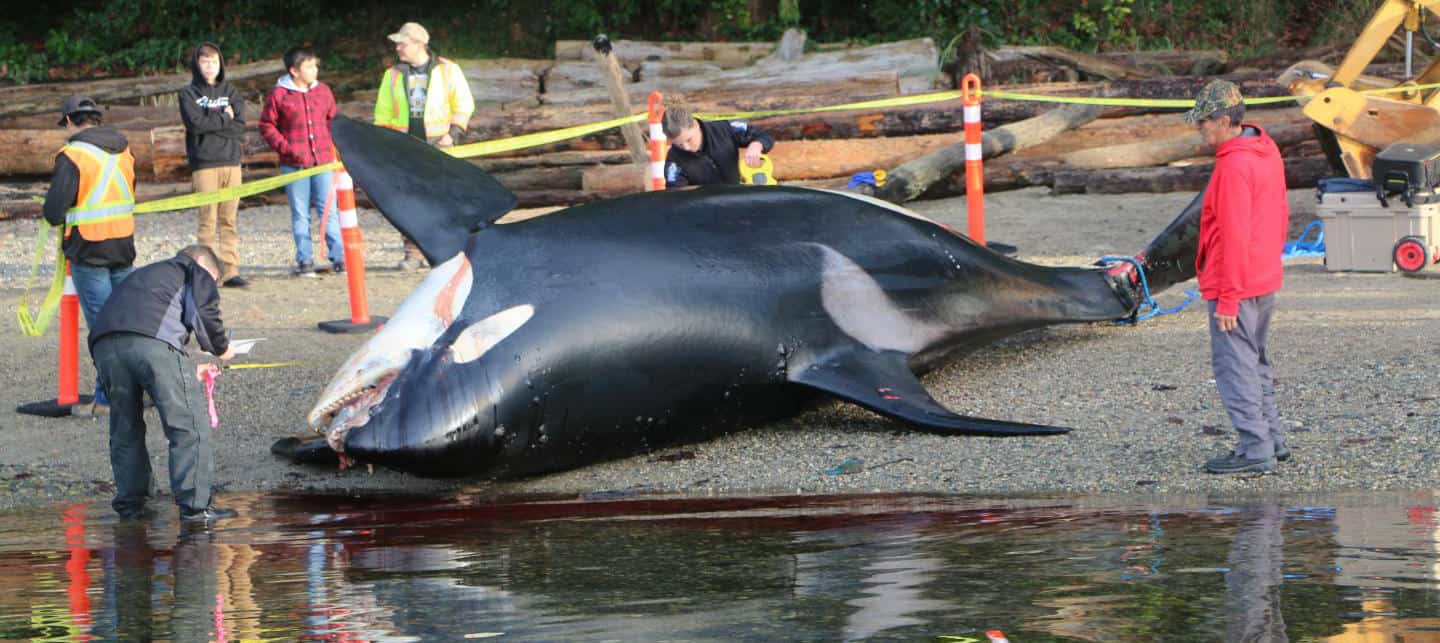Share this article
Finding humans’ role in killer whale deaths
Killer whales off the Pacific Northwest coast are rare. One population — the southern resident population — is endangered, down to just 74 whales. That makes it hard to for researchers to determine what’s killing them, because so few carcasses wash ashore for them to study.
“When they do land on the beach and are found, they’re a gold mine of information,” said TWS member Joseph Gaydos.
A wildlife veterinarian at the University of California Davis and the director of the marine conservation program the SeaDoc Society, Gaydos been studying killer whales (Orcinus orca) stranded between 2004 and 2013. He’s been able to study only a few of them, but he discovered that several of the deaths were caused by humans.
“I think the most surprising thing for me was how many different interactions or impacts we were seeing from people,” Gaydos said.
In past research, he and his colleagues identified southern resident whales that washed ashore in Victoria, Vancouver and Seattle, but those were just a fifth of the known deaths. In British Columbia and Alaska, where members of the northern resident population washed ashore, his team determined that only 3% of known dead whales could be found. Although the stranded whales they encountered were few, their research helped them develop a protocol for determining the cause of death.

A southern resident killer whale swims in the Salish Sea in 2018.
Credit: Joe Gaydos/UC Davis
In a new study published in PLOS ONE, Gaydos’s team used this new protocol to determine what was killing killer whales that washed ashore in British Columbia, Washington, Oregon and elsewhere. Those included fish-eating resident whales, mammal-eating transient killer whales and shark-eating offshore killer whales.
His team recorded a total of 53 whales stranded between 2004 and 2013 and determined causes of death for 22 of them. Of those, five — across all age groups — were the result of human interactions. “It wasn’t just the young ones being stupid, getting hit by a boat,” Gaydos said.
Boat strikes were believed to be responsible for four of the deaths. In the fifth, a calf ingested a fishing line and died from sepsis. Natural causes included infectious disease, nutritional deficiencies and one that died as a result of a congenital facial deformity, a finding Gaydos said they could only pinpoint thanks to looking at individuals rather than population trends.
Because the whales’ numbers are so low, a single boat strike can make a big difference for some of the endangered populations, he said. “Nobody wants to feel like they’re causing the deaths,” he said. But the good news is, individual changes can also have a big impact, like redirecting boats from areas where orcas are present. In Washington and British Columbia, managers are using acoustic data to inform whale-watching and commercial shipping activities.
While the coronavirus pandemic has reduced commercial and recreational boat traffic, Gaydos said, managers need to address what happens when those vessels return to the sea.
“Whales might have experienced the quietest time since 2001,” he said. “I think that was a short-lived reprieve, so we need to think of some long-term solutions. We need commerce, but we need to be smart about how we do that.”
Header Image: An 18-year-old male southern resident killer whale stranded near Sechelt, British Columbia in 2016 died from a vessel strike. Credit: Paul Cottrell, Fisheries and Oceans Canada








